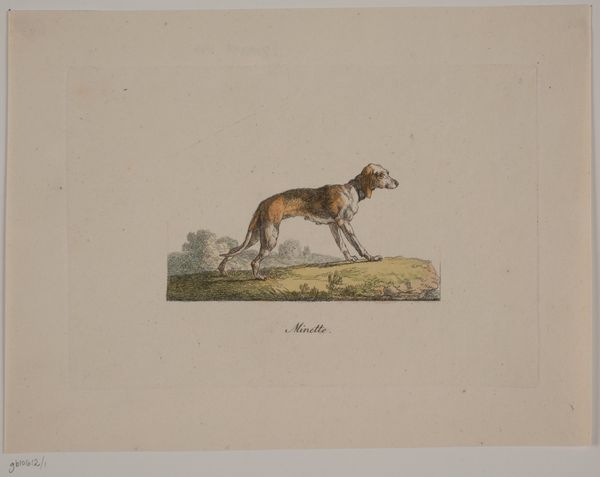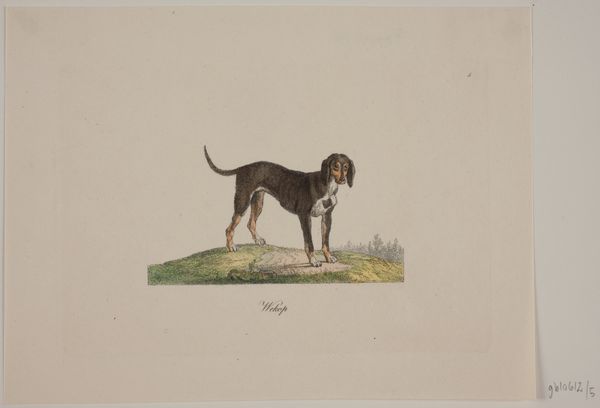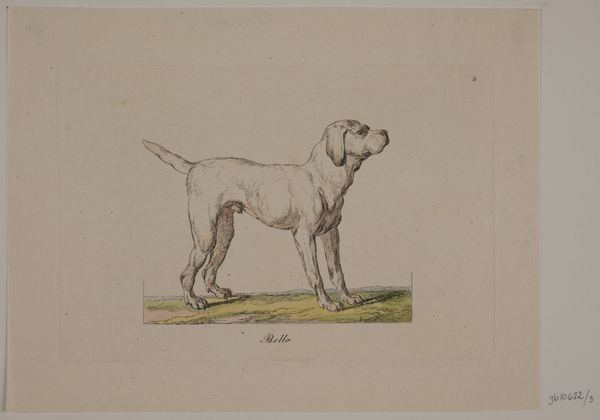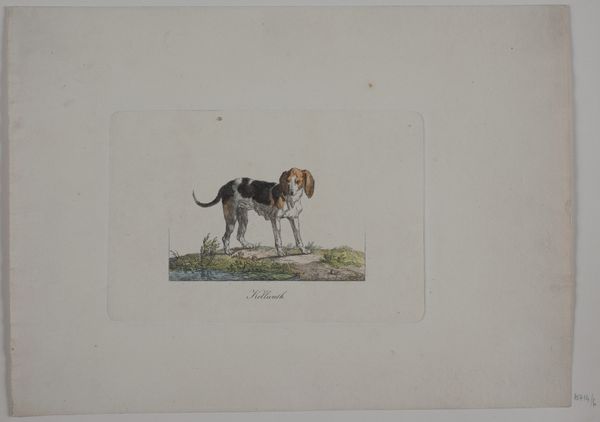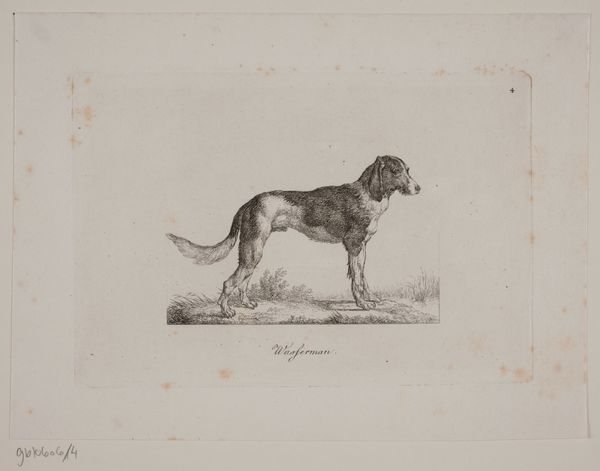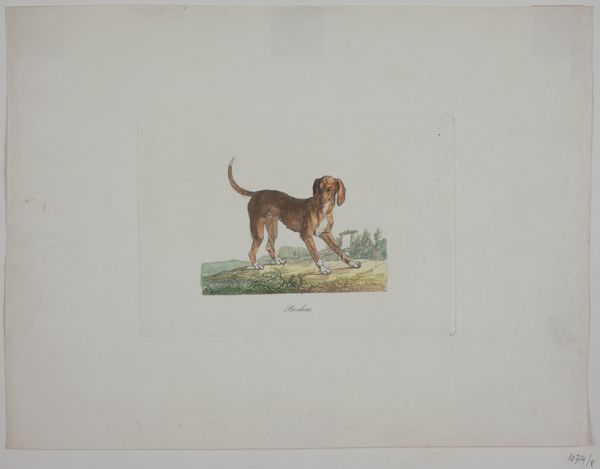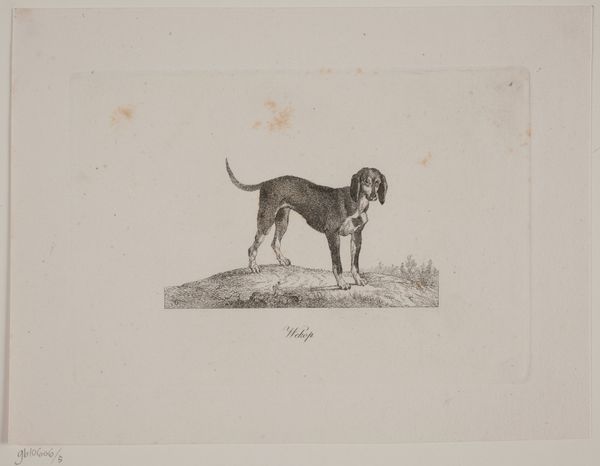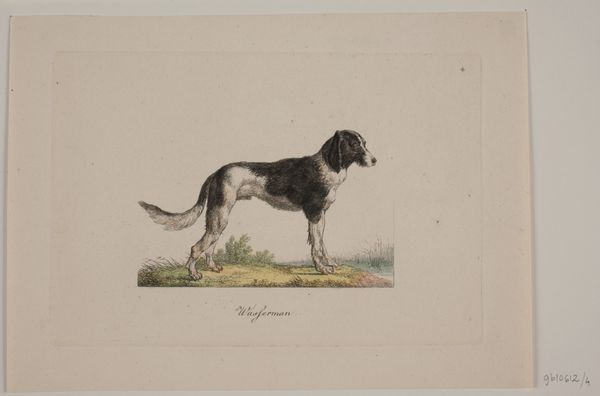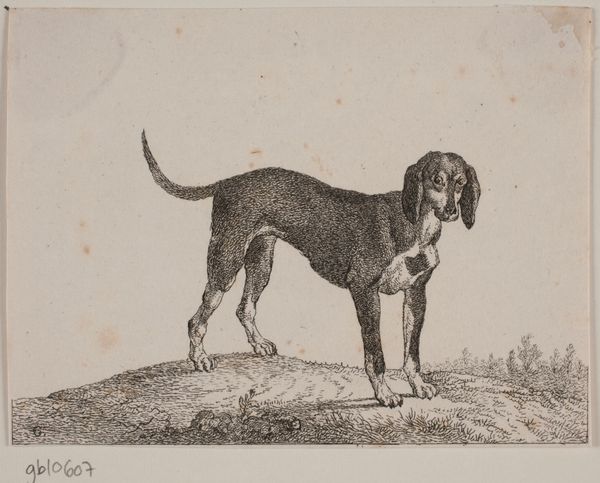
print, engraving
#
portrait
# print
#
engraving
#
watercolor
#
realism
Dimensions: 110 mm (height) x 162 mm (width) (plademaal)
Curator: My initial impression is a study in quiet dignity; there's something noble about this canine portrait. Editor: Indeed. We’re looking at "Hector", an engraving by Christian David Gebauer dating back to 1821. It resides here at the SMK, the Statens Museum for Kunst. Curator: I find it intriguing that Gebauer chose a dog as his subject. Animal portraiture provides an interesting lens through which to examine shifting class dynamics and evolving attitudes toward pets in the 19th century. What purpose did prints of dogs serve then, beyond just decoration? Editor: Excellent question. At the time, there was a booming interest in various dog breeds, often associated with specific social classes. The portrayal of animals also aligned with Romantic ideals about nature. Hector could have been a noble's hunting dog. Prints like this circulated, shaping tastes and documenting such trends for a broader public. Curator: So, in a sense, this seemingly straightforward engraving could offer a commentary on power and status as ascribed not just through human, but canine representation? The whiteness of the belly compared with the depth of color on the rest of his body creates a unique division. Editor: Absolutely. Notice how Gebauer rendered Hector against a simple, natural backdrop, positioning the dog slightly above the landscape. This subtle elevation contributes to that feeling of inherent superiority and controlled grace. What do you make of the print's artistic elements, beyond its subject matter? Curator: I'm drawn to the almost hyper-realistic depiction – a style rooted in a specific historical moment in portraiture and shifting tastes. I do find it difficult to look past contemporary theory, and therefore, examine how ideas around control and ownership come into play here, influencing both representation and reality. Editor: That’s a useful perspective. Perhaps a tension between the dog's apparent freedom, conveyed through his active stance, and its implied social role. Works such as "Hector" give insights into how artistic tastes were politically informed. Curator: Thank you. It allows for rich conversation around intersections of class, human, and non-human narratives of power. Editor: Agreed. This piece reminds us that the study of even seemingly simple imagery can unlock multifaceted social dialogues.
Comments
No comments
Be the first to comment and join the conversation on the ultimate creative platform.


